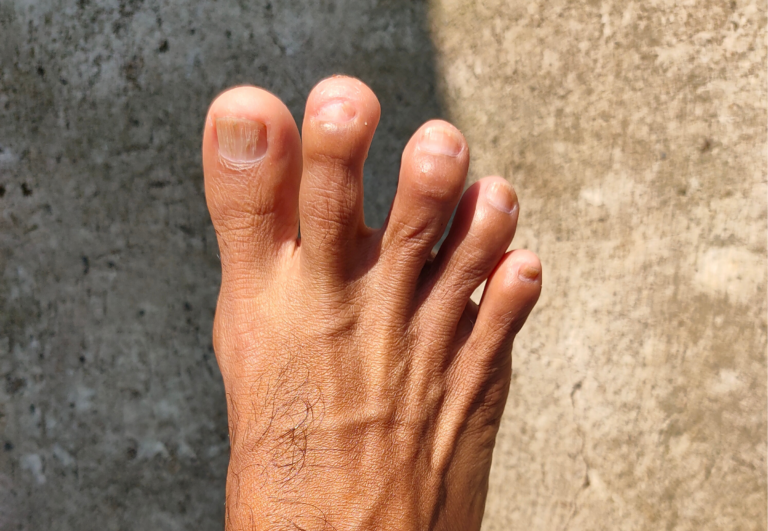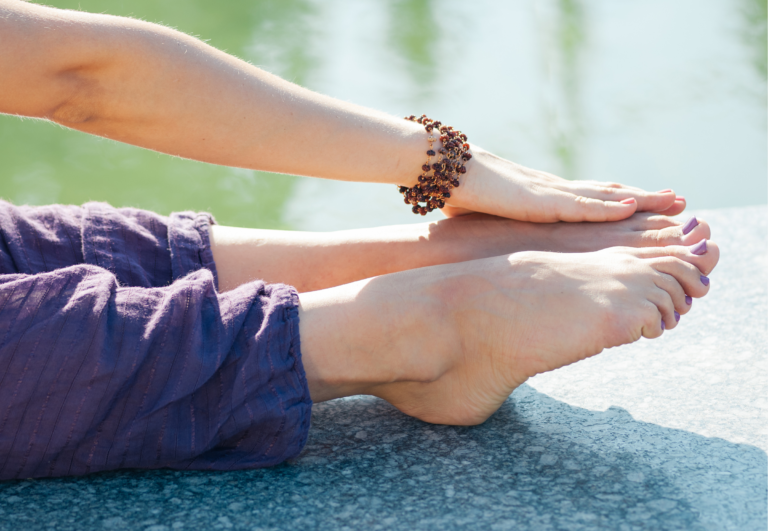Exercises for Toe Mobility: A Guide to Enhancing Foot Flexibility
Toe mobility is fundamental to foot health and overall comfort, but it’s an often-overlooked aspect of physical well-being. As an avid user of toe spacers and a proponent of foot care, I’ve discovered that incorporating simple toe exercises into your daily routine can enhance flexibility, contribute to foot strength, and improve performance. Whether you spend long hours on your feet or lead a more sedentary lifestyle, toe mobility exercises can make a significant difference.
Through my experience, I’ve learned that toe exercises are not just for athletes or those recovering from foot injuries. Everyone can benefit from these stretches and movements. They help maintain the range of motion, reducing the risk of discomfort that can arise from tight muscles and neglected joints in our feet. Common toe exercises involve gentle stretching and strengthening movements that target the small muscles in each toe.
Undoubtedly, these exercises are also crucial for those looking to improve their athletic performance. Efficient foot mechanics are essential for stability and power during physical activities. Simple exercises like toe raises, curls, and stretches can be easily integrated into any workout or performed at home, requiring no special equipment. By taking just a few minutes each day to focus on toe mobility, we can promote better foot health and enhance our overall movement patterns.
Exercises for Toe Mobility – a Step-by-Step Routine
Improving toe mobility is crucial for maintaining foot health, enhancing balance, and supporting proper gait mechanics. Here’s a step-by-step routine for exercises that focus on increasing toe mobility:
- Toe Splay:
- Sit or stand with your feet flat on the ground.
- Spread your toes as wide as possible, hold for a few seconds, and then relax.
- Repeat 10-15 times to improve the mobility and flexibility of your toes.
- Toe Lifts:
- While seated or standing, try to lift each toe individually, starting with the big toe.
- Attempt to keep the other toes flat on the ground while lifting one toe at a time.
- Perform 10 repetitions for each toe to enhance dexterity and independence.
- Toe Curls:
- Sit with your feet flat and place a towel on the floor in front of you.
- Using your toes, scrunch the towel towards you and then release.
- Do 2-3 sets of 10-15 repetitions to strengthen the muscles under the feet and increase toe mobility.
- Big Toe Stretches:
- Sit with one leg crossed over the other.
- Use your hand to gently pull your big toe up, down, and to the side.
- Hold each stretch for 15-30 seconds to increase the range of motion in the big toe joint.
- Toe “Windshield Wipers”:
- Sit with your feet flat on the floor.
- Keep your heels in place and swing your toes side to side like windshield wipers.
- Perform 10-15 repetitions to improve lateral toe mobility.
- Marble Pickup:
- Place a few marbles on the ground and a small bowl nearby.
- Using your toes, pick up each marble and place it into the bowl.
- This exercise improves toe strength and fine motor control.
- Ankle Circles with Extended Toes:
- Sit comfortably and extend one leg out in front of you.
- Extend your toes and perform ankle circles in both directions.
- Do 10 circles in each direction to enhance mobility in the toes and ankles.
- Sand Walking:
- If possible, walk barefoot in sand, which provides natural resistance and allows for full toe splay and curl.
- This can help strengthen toe muscles and improve overall foot mobility.
Incorporate these exercises into your daily routine, especially if you spend a lot of time in shoes or have limited foot mobility. Start with a few repetitions and gradually increase as your strength and flexibility improve. Always listen to your body, and if you experience any pain or discomfort, reduce the intensity or consult with a healthcare professional.
The Basics of Toe Mobility
My experience as a toe spacer expert has shown me the significance of toe mobility for overall foot health. It’s essential for maintaining balance, posture, and flexibility, and supports the strength needed for daily activities.

Understanding Toe Anatomy
The anatomy of the toes is complex, involving small muscles and joints that work in harmony. Each toe consists of small bones called phalanges, which connect to the forefoot. The big toe, or hallux, plays a crucial role in providing stability and support. Maintaining the range of motion in these joints is vital for effective toe-off during walking and for ankle mobility, which affects the entire lower extremity.
Importance of Toe Mobility
Mobility in the toes is fundamental for proper foot mechanics. Good toe mobility contributes to better posture, enhances athletic performance, and can alleviate potential discomfort from the toes up through the lower limbs. Flexibility and strength in the toes improve the foot’s ability to adapt to various surfaces, which is essential for balance and injury prevention. Integrating toe mobility exercises into your routine can lead to improved foot function and overall well-being.
Common Toe Mobility Issues
Toe mobility is crucial for maintaining balance, gait, and overall foot health. Limited movement can lead to discomfort and the development of various foot conditions. Here we will explore common symptoms of immobility and specific conditions that impact toe mobility.
Recognizing Symptoms of Immobility
Pain and inflammation in the toes can be key indicators of mobility issues. You might experience difficulty in moving your toes or performing activities that require toe flexibility, such as walking or sporting movements. Hammer toe, a condition where the toe is bent at the middle joint, can also manifest due to immobility.
Conditions Affecting Toe Mobility
Several conditions can impair toe mobility:
- Bunions: A bunion, or hallux valgus, is a bony bump that forms at the base of the big toe joint. It can cause significant pain and affect the alignment of the toes.
- Plantar Fasciitis: This involves inflammation of the plantar fascia, a thick band of tissue that runs across the bottom of your foot. It can impact toe mobility indirectly through pain and stiffness in the foot.
- Hammer Toe: Often resulting from muscle imbalance, hammer toe leads to the toe being bent downward instead of pointing forward, affecting toe mobility and causing pain.
These conditions can restrict the movement of your toes, making even simple exercises a challenge. Addressing toe immobility can be crucial in improving foot function and relieving discomfort.
Toe Strengthening Exercises
Strengthening your toes is beneficial for balance and stability. It can enhance your foot mechanics and may reduce foot discomfort.
Introduction to Toe Strengthening
I’ve learned from my experience that toe strength plays a crucial role in our overall foot health. It’s not just about the ability to grip or splay, but consistent toe strengthening can improve balance and contribute to more stable and efficient movement.
- Toe Splay: Gradually increase the ability to spread your toes apart. Start without resistance and then consider using toe spacers for added difficulty.
- Toe Extension: Work on lifting your toes while keeping the balls of your feet on the ground. It helps improve toe strength and flexibility.
Exercise Progressions
When progressing with toe exercises, always consider your current strength levels and increase difficulty gradually.
- Toe Raise: Standing with feet shoulder-width apart, lift just your toes off the ground while keeping your heels pressed down.
- Balance Exercises: Try balance exercises that engage your toe strength, like standing on one foot with toes spread, to improve stability.
To prevent overworking the muscles, it’s important to alternate between days of performing toe strengthening exercises, giving them time to recover and adapt.
Toe and Ankle Stretching Techniques
I understand how crucial it is to maintain flexibility and range of motion in your toes and ankles. Here, I’ll share techniques that you can incorporate into your routine to improve toe and ankle mobility.
Effective Stretching Exercises
For the toes, you can perform toe flexes and stretches to improve mobility. Try this simple routine:
- Toe Raise: Lift all toes off the ground, hold for a few seconds, and then lower them.
- Toe Point: Point your toes straight away, hold, then bring them back.
- Toe Flex: Curl your toes as if gripping something with them, hold, then release.
To focus on the big toe, you can gently stretch it up, down, and to the sides to improve its motion. For your ankles, effective exercises include:
- Ankle Circles: Place a rolled towel or foam roller under your ankle. Rotate your ankle slowly in 10 circles, both clockwise and counterclockwise.
- Ankle Dorsiflexion Stretch: With your feet flat, gently pull your toes towards you until you feel a stretch in your calf muscles and hold.
Remember to work on each toe individually and your ankles to maintain a good balance of mobility.
Stretching Frequency and Duration
Frequency and duration are vital for improving toe and ankle mobility. A consistent stretching routine, ideally daily, is most beneficial for maintaining flexibility. Here’s what I recommend:
- Stretching Frequency:
- Aim for at least once daily, though stretching multiple times a day can provide extra benefits.
- Stretching Duration:
- For each stretch, hold for about 5-30 seconds, depending on your comfort.
- Repeat each exercise 10 times for both feet to get an effective stretch.
Each stretch should be performed carefully to avoid strain. If you experience any pain or discomfort, it’s important to pause and consider consulting a professional. Remember, consistency is key for seeing improvements in toe and ankle flexibility.
Tools and Equipment
Incorporating specific tools and equipment can markedly enhance the benefits of toe mobility exercises. Ranging from everyday household items to specialized fitness gear, these instruments can add resistance, provide support, and help in perfecting exercise form.
Supportive Tools for Toe Exercises
For those beginning their journey into toe mobility, tools like toe spacers can be extremely beneficial. Toe spacers are designed to separate the toes and encourage correct alignment. I’ve found that using them regularly can help stretch and strengthen the intrinsic muscles of the foot.
- Toe Spacers: These are made of silicone or rubber and can be slipped between toes for stretching purposes.
- Towel or Cloth: A simple towel can be used for toe curl exercises, helping to increase toe strength and dexterity.
Using Resistance Bands and Weights
Adding resistance to toe exercises can further improve muscle strength and flexibility. Resistance bands are versatile tools that can be used to create this added challenge. For more advanced practices, small weights, like kettlebells, can be incorporated to intensify exercises.
- Resistance Bands: Wrap a band around the toes and extend or flex the feet against the resistance.
- Exercise: Place a band around all toes and spread them apart, then bring them back together to work on strength and mobility.
- Kettlebell: Can be used to add weight during toe curls. Begin with a lightweight to ensure proper form.
- Exercise: Perform a toe curl by lifting a small kettlebell using only your toes.
By utilizing these tools, individuals can perform specific exercises prescribed by a physical therapist or toe mobility routines designed for personal goals. The right tools can make a significant difference in the effectiveness of your practice.





